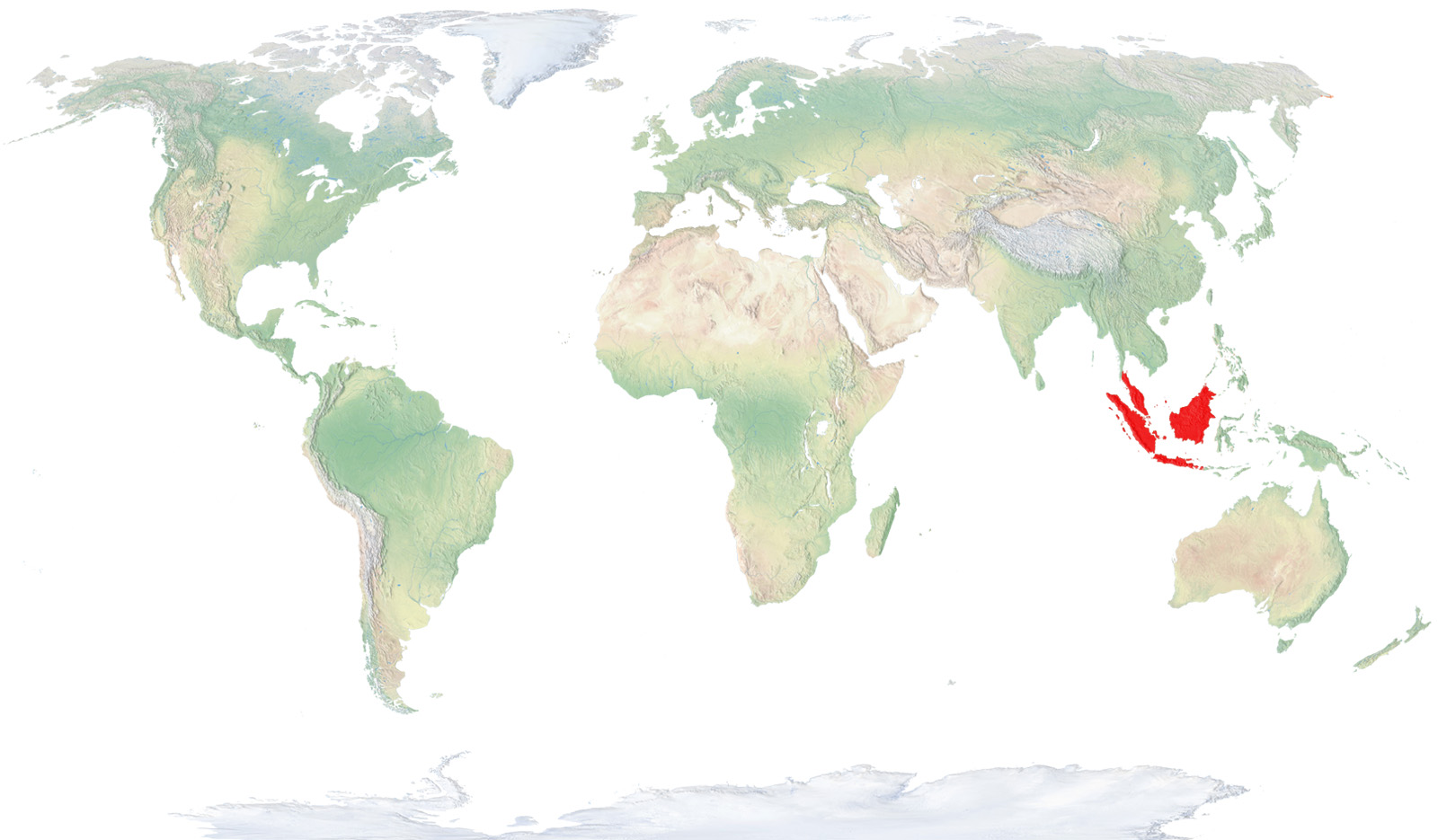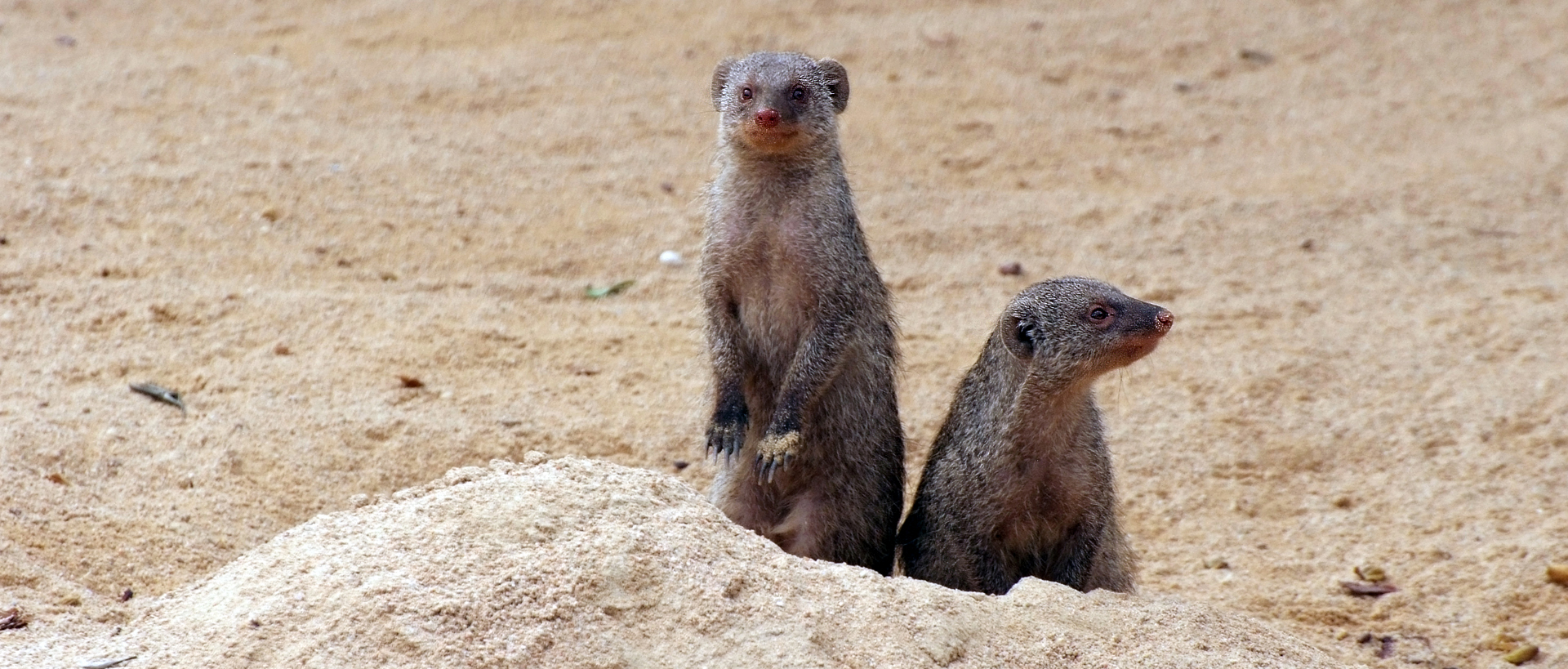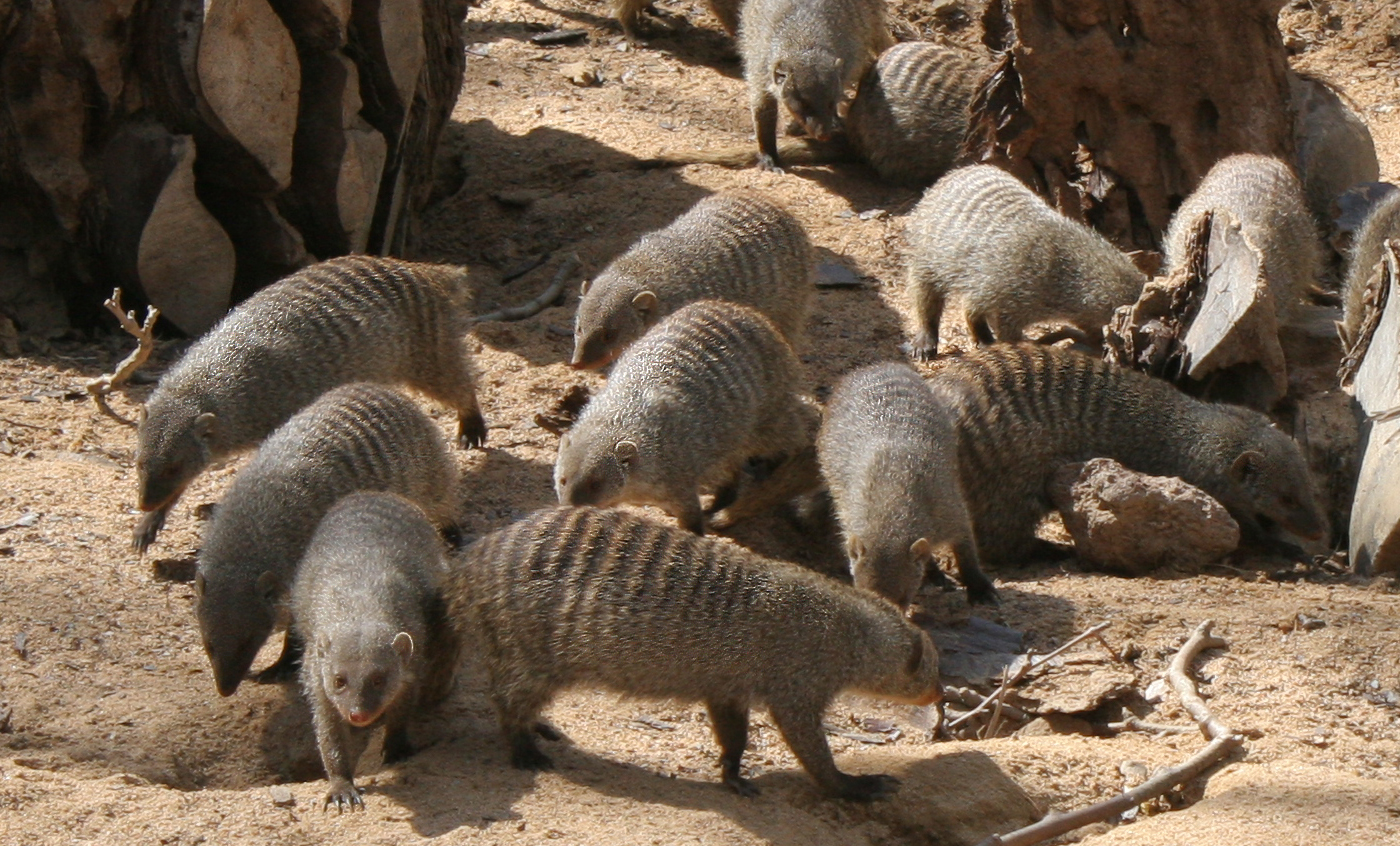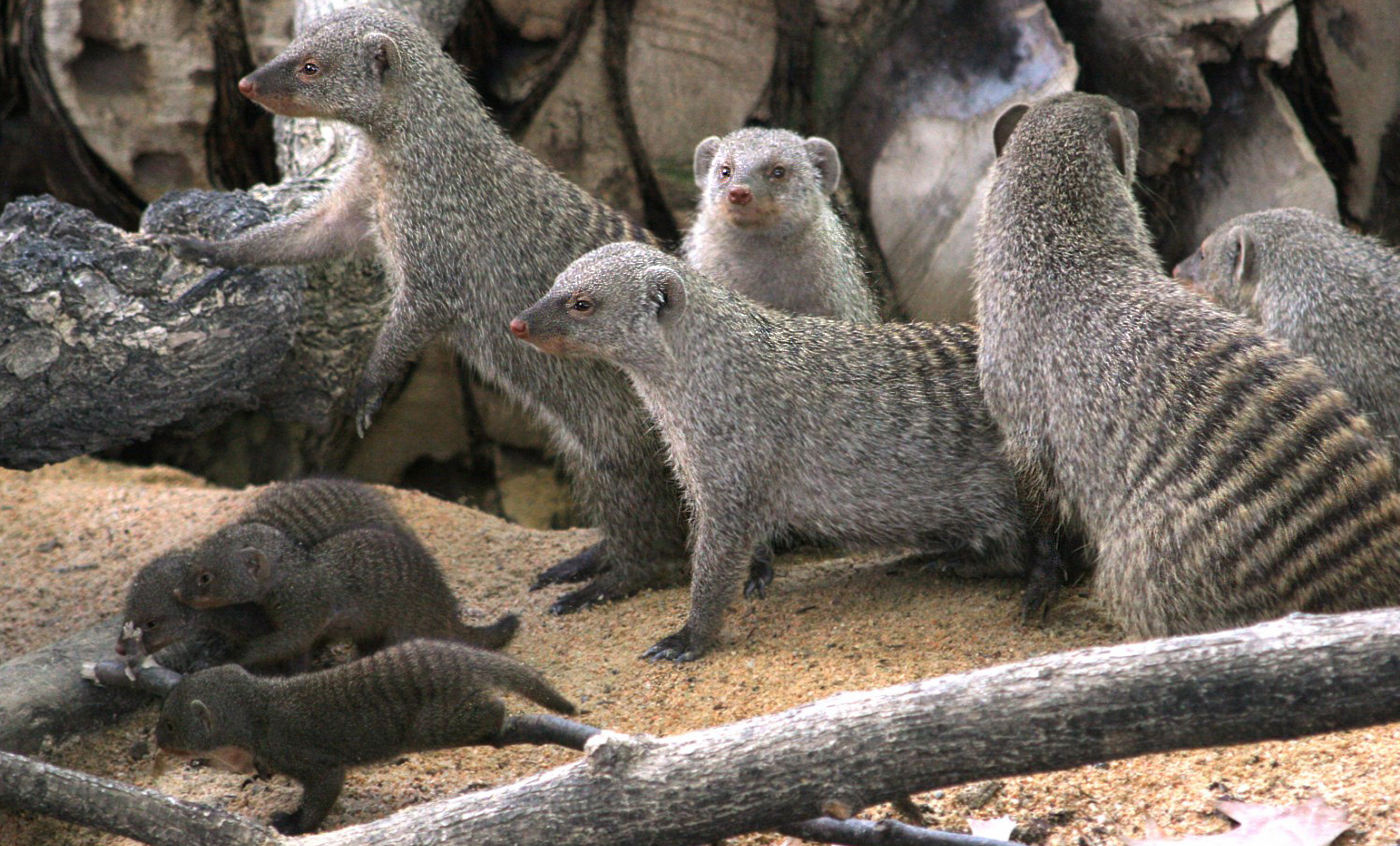Banded mangoose
This species lives in the savannahs, open forests and brush areas, generally near flowing water, in a large part of Africa south of the Sahara. It is not present in desert and semi-desert areas and mountainous regions, even though it has been observed as high as 1,600 metres in altitude in Ethiopia.
It is of diurnal habits and gregarious in nature, with a matriarchal social structure and nomadic behaviour, changing area every two or three days. It is basically an insectivore, but it also eats some fruits, small vertebrates and bird's eggs.
Natural habit
Great part of Africa in southern Sahara, from Gambia and Senegal to Ethiopia and South Africa.

- Distribution / Resident
- Breeding
- Wintering
- Subspecies
Risk level
- Extint
- Extint in the wild
- Critically endangered
- In Danger
- Vulnerable
- Near threatened
- Minor concern
- Insufficient data
- Not evaluated
Taxonomy
Physical characteristics
Biology
Reproduction
Biology
It is a medium sized mongoose with a brown hue, with ten to fifteen darker stripes on the back, which differentiate them from other mongoose species. The nails of the front limbs are more developed and more curved than back limbs, in order to dig its burrows and the ground, looking for invertebrates that are part of its diet.
Its habitat are savannahs, open forests and shrublands, generally near water streams. It cannot be found in desert and semi-desert areas, nor in mountain regions, although in Ethiopia it has been sighted, up to 1,600 m high.
Its diet is basically insectivore, but it also feeds on fruits, small vertebrates and bird eggs. In the morning, the group leaves the burrow and goes to feeding areas, where each animal looks for food on its own, although sometimes they collaborate to capture a snake or a bigger prey.
Normally, only the most three or four dominant females in the group mate, who inhibit the other ones. Reproduction takes place at once and all females usually give birth at the same time, between two and six pups, which are born blind and hairless. Any female can breastfeed them and they are watched by all members of the group.
When the group leaves to feed, some females, and often an adult male as well, remain at the burrow, watching the pups, who do not open their eyes until the tenth day and do not leave the burrow until the fourth week. During the fifth week they start joining the group and feeding on their own. This is the most dangerous moment for pups, as it is estimated that only 50% survive for more than three months.
It is diurnal and gregarious, and forms groups of 10 to 20 animals, sometimes more than 60, with a social matriarchal structure and a nomad behaviour, moving from an area every two or three days. They always maintain contact with each other and often stand on their hind legs, in order to watch the surroundings and detect the presence of potential predators.
In case of danger, they make an alarm sound and run to take shelter at their burrow or among vegetation. If shelter is not available nearby, they can form a compact group, with the youngest members in the centre, to defend themselves. The youngest, the oldest and the sick ones are protected by the rest of the group.
It is a common species, abundant in a great part of its distribution area.





